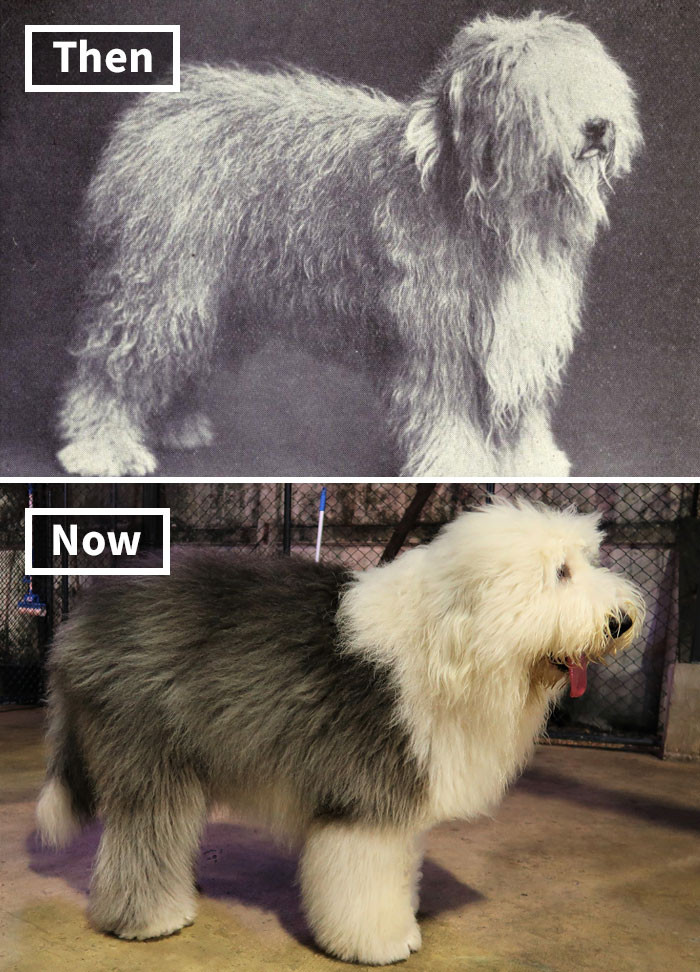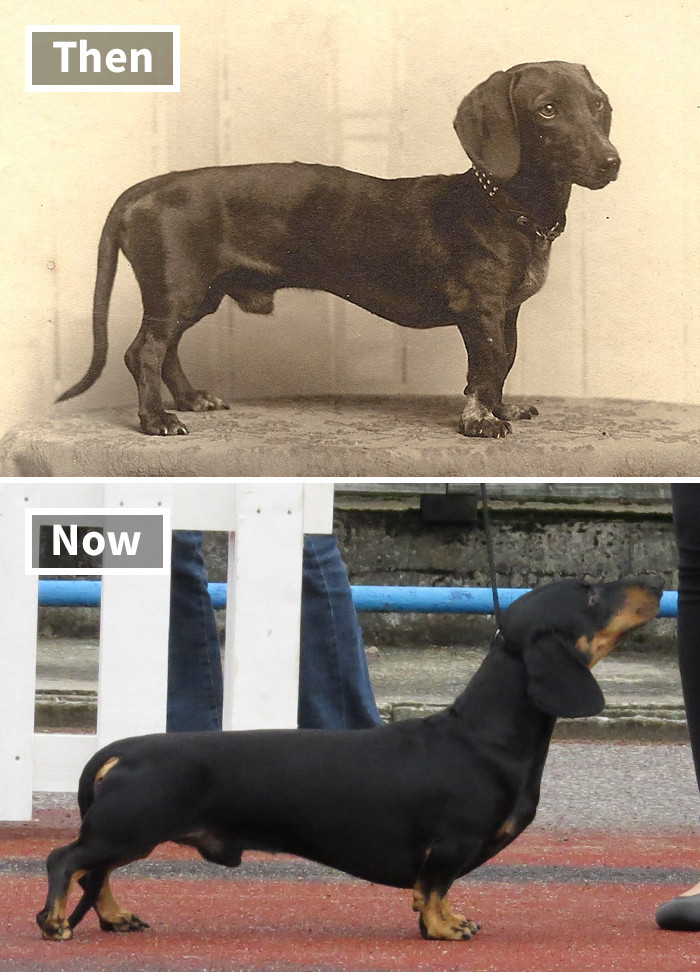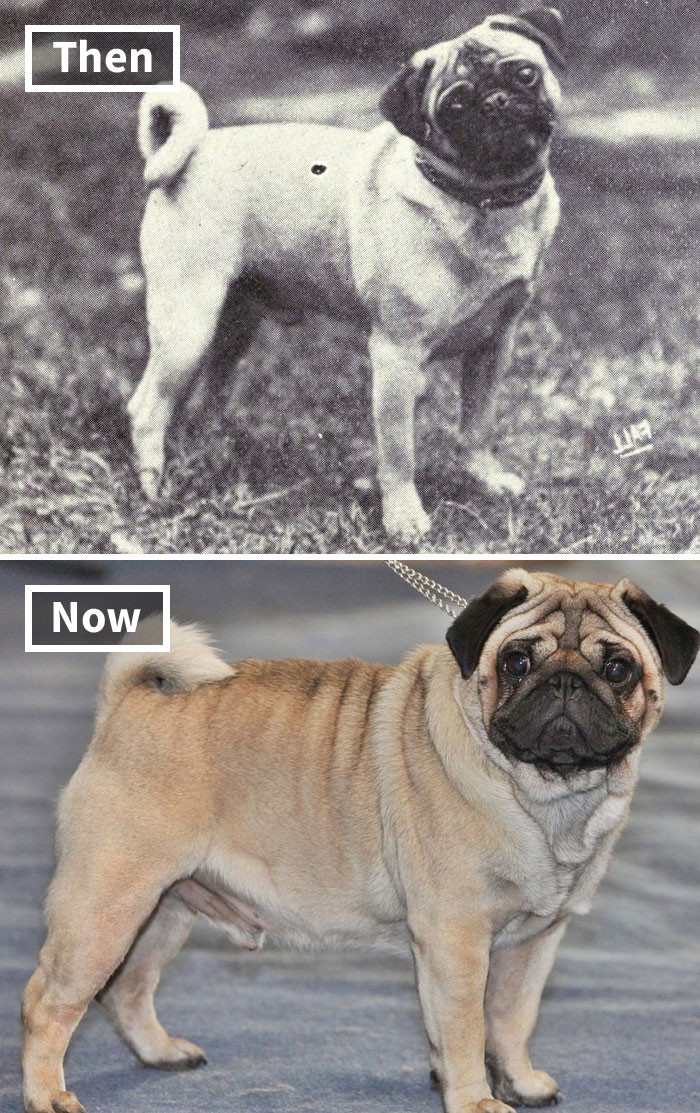
Some Dog Breeds Have Changed Dramatically in The Past 100 Years
Some dog breeds looked a lot different a century ago.

Undoubtedly, dogs are humans’ best friends. But dogs have worked hard for that title.
Dogs have been around us for more than 30,000 years now. And all through that period, we’ve been selectively breeding dogs to better serve our needs.
And dog breeds have dramatically changed through this period, mentally and physically. Some of these changes caused some dogs to inherit some severe medical issues.
The selective breeding process became more sophisticated in the 20th Century, and changes stopped being so dramatic, but they are still visible. We have compiled a list of 18 popular dog breeds that underwent changes in the past 100 years.
Take a look and compare the side by side images of dogs.
1. Old English sheepdog
The Old English sheepdog had longer and thicker hair than it is today. Apart from that, they haven’t changed a lot.
 dogsofallnations
dogsofallnations2. Dachshund
They are longer than they used to be... Also, they now have a broader chest and shorter legs.
 homedesignfordogs
homedesignfordogs
3. Bull Terrier
Their faces became shorter, while their jaws and the nose bridges became larger. Their bodies are more muscular now, and their legs are shorter.
 dogsofallnations
dogsofallnations4. Newfoundland
They look similar, but Newfoundlands were a lot smaller than they are now. "Dogs of all Nations" says that the breed weighed about 100 pounds back in 1915. Today, Newfoundland males can reach weights up to 150 pounds.
 dogsofallnations
dogsofallnations
5. Basset Hound
The rear legs of the basset hound are now shorter, and the ears became much longer. The face is now shorter, and the skin is more wrinkled.
 dogsofallnations
dogsofallnations6. Saluki
The Salukis are taller and thinner now. They also have longer ears and legs.
 unknown
unknown
7. Dobermann
The body shape became leaner, and the ears are a bit different. The most significant change is psychological - they are not so aggressive as they used to be.

8. Boxer
The body shape has changed dramatically, and the snout used to be longer.
 dogsofallnations
dogsofallnations
9. West Highland white terrier
Not many changes here- their fur became a little bit longer and denser.
 dogsofallnations
dogsofallnations10. Airedale Terrier
They haven't changed much, except for a hairier coat and a longer head with more fur.
 unknown
unknown
11. Chow Chow
These fur balls weighed about 50 pounds 100 years ago. Now, they can weigh up to 75 pounds. Their faces are more wrinkly now.
 dogsofallnations
dogsofallnations12. Pug
They are approximately the same size they were 100 years ago, but they were bred to have larger eyes and flatter snouts. Sadly, this caused breathing problems and other health problems.
 Wikipedia Commons
Wikipedia Commons
13. Great Dane
They weighed less than today. According to "Dogs of All Nations," males reached up to 120 pounds 100 years ago, and today, they can weigh up to 175 pounds.
 unknown
unknown14. Rottweiler
They don't have a docked tail anymore. Also, their fur is now thicker and smoother.
 Wikipedia Commons
Wikipedia Commons
15. Shetland Sheepdog
They have doubled in size, and their fur also became longer.
 unknown
unknown16. Irish Setter
They haven't changed much – they got a longer and denser coat and slightly thinner body.
 Wikipedia commons
Wikipedia commons17. Scottish Terrier
They now have much longer and softer fur.
 dogsofallnations
dogsofallnations18. German Shepherd
They became larger and got longer and thicker fur. Their chest is now wider, and they are more muscular.
 Wikipedia commons
Wikipedia commons






